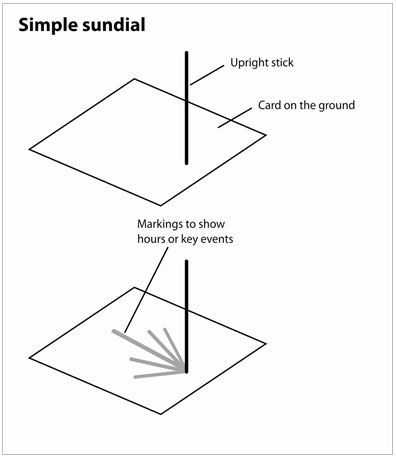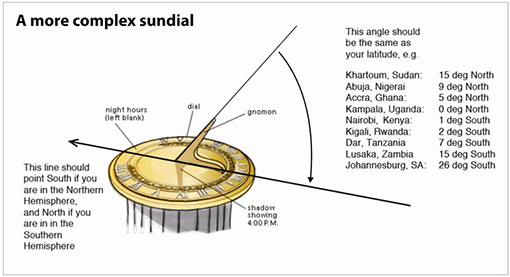Resource 3: Sundials
![]() Background information / subject knowledge for teacher
Background information / subject knowledge for teacher
The Egyptians formally divided their day into parts something like ours. Obelisks (slender, tapering, four-sided monuments) were built as early as 3500 BCE. Their moving shadows formed a kind of sundial, enabling people to partition the day into morning and afternoon. Obelisks also showed the year’s longest and shortest days when the shadow at noon was the shortest or longest of the year. Later, additional markers around the base of the monument would indicate further subdivisions of time.
Another Egyptian shadow clock or sundial, possibly the first portable timepiece, came into use around 1500 BCE. This device divided a sunlit day into ten parts plus two ‘twilight hours’ in the morning and evening. When the long stem, with five variably spaced marks, was oriented east and west in the morning, an elevated crossbar on the east end cast a moving shadow over the marks. At noon, the device was turned in the opposite direction to measure the afternoon ‘hours’.
In Europe, during most of the Middle Ages (roughly 500 CE to 1500 CE), technological advancement virtually ceased. Sundial styles evolved, but didn’t move far from ancient Egyptian principles.


Original source: http://inventors.about.com [Tip: hold Ctrl and click a link to open it in a new tab. (Hide tip)] (Accessed 2008)
Resource 2: Water clocks – ways of measuring time throughout history



